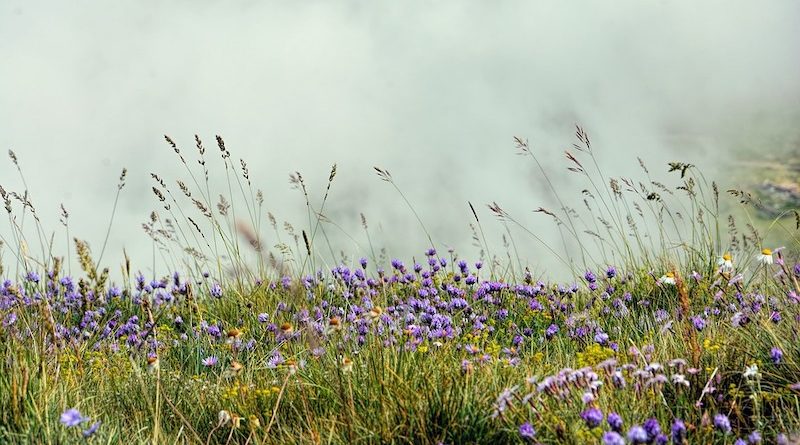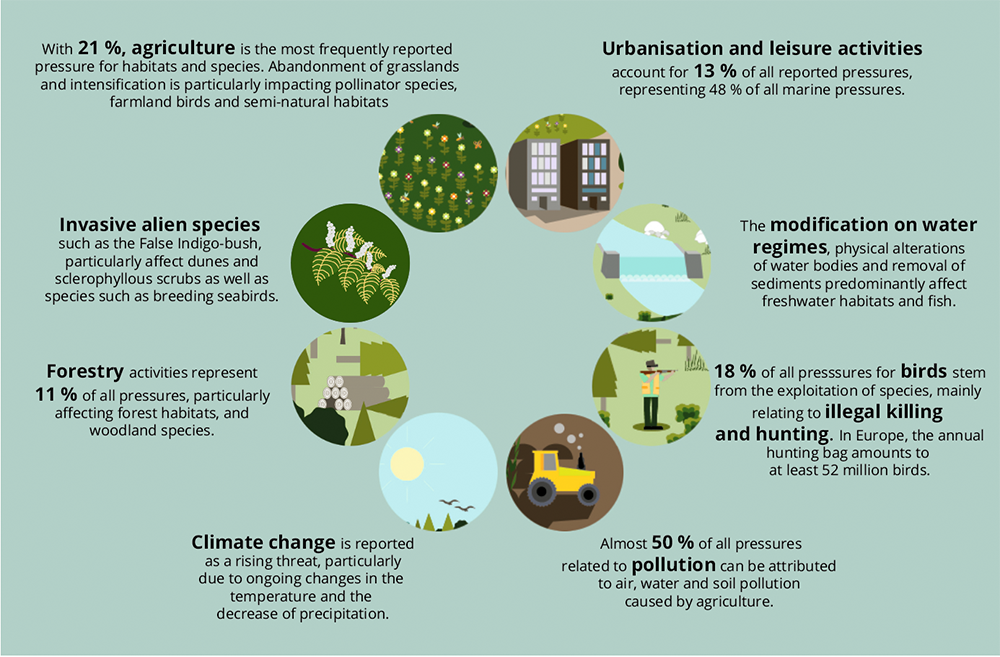
Restoring biodiversity to its natural place
Although the climate crisis has been recognised as a threat for decades, it is only belatedly that the biodiversity emergency and its associated mass extinctions is receiving the attention it deserves. Now we must restore nature before it is too late.
The scientific evidencei is clear: we are eroding nature and with it the basis for our food, health, economies and societies. The functions of the ecosystems we take for granted are being compromised, yet action has been lacking in the past, seemingly ignoring that our lives depend upon them, with the lion’s share of attention going to the climate crisis.
However, the need for transformative action has finally and belatedly been recognised in the European Green Deal (EGD). In the environmental movement, we know that we need system change to halt biodiversity loss, and we know what this system change needs to entail.
Restoration measures are one crucial multi-benefit element in the “portfolio of actions” needed to flatten and reverse the curve of biodiversity loss.
Instead of intensive agriculture forestry and other changes in land use contributing around a quarter of total global greenhouse gas emissions, restoration and conservation “can provide more than one third of the most cost-effective climate mitigation needed to keep global warming under 2°C by 2030”, according to the Intergovernmental Panel on Climate Change (IPCC).
Instead of multiplying the risks of infectious diseases by destroying nature and wildlife, we can enhance our resilience to future pandemics by healing ecosystems.
Instead of tolerating that one out of every eight deaths in Europe is caused by preventable environmental factors, we can contribute to improving mental and physical health by repairing ecosystems.
And lastly, instead of throwing money at inherently unsustainable sectors and going back to business as usual, we can create sustainable jobs and invest in restoration whose benefits generally far exceed the costs.
For this to happen, we need a focused restoration law that sits within the broader context of a reformed Common Agricultural Policy (CAP) and adequate funding through the EU budget and the Recovery and Resilience Facility (RRF).
The law of the land
The European Green Deal, together with the associated Biodiversity and Farm to Fork Strategies, offers hope, momentum and direction.
The commitment in the Biodiversity Strategy to propose legally binding restoration targets in 2021 is a major opportunity to promote both biodiversity and climate objectives and to push the needed regenerative agenda of giving back to the planet more than we take and investing in resilience.
However, this will need clear and ambitious targets, urgent action and adequate funding. Concretely, the restoration law must:
● Set targets to restore 15% of the EU’s land and sea area and at least 25,000km of free-flowing rivers by 2030, while also including a target for CO2 removal through natural sinks
● Focus on ecosystems that can provide synergies with climate mitigation and adaptation by storing or sequestering carbon, while the primary objective should be to tackle biodiversity loss
● Result in large-scale restoration to high-quality nature with a significant positive effect on biodiversity through permanent land use change
● Go beyond existing requirements under the Nature Directives and other existing obligations
Funding the transition
The restoration law cannot do everything. Its strength will lie in its targeted and specific nature that will make it easy and timely to implement. This means that we must also look towards the CAP and other EU financial instruments.
With intensive agriculture and wider land use change being the main driver of biodiversity loss, the reform of the Common Agricultural Policy (CAP) is a critical opportunity to reverse biodiversity loss and to improve the resilience of our food systems and our farming community to support the wider Green Deal ambitions.
CAP support can contribute to halting biodiversity loss while benefiting farmers, wider society and the climate. To do so, at least half of its budget needs to be dedicated to environmental and climate targets.
In addition to the CAP, the EU’s Multi Annual Financial Framework (MFF) and the Recovery and Resilience Facility (RRF) are important sources of funding. The commitment for 37% of the RFF to focus on the European Green Deal is a good start. However, to truly enable restoration, at least 10% of the MFF should further be allocated to biodiversity. The EUR20bn/year for nature promised in the Biodiversity Strategy are only the bare minimum, but this is insufficient to cover the large-scale restoration that is urgently needed.

https://www.eea.europa.eu/publications/state-of-nature-in-the-eu-2020
Diversity of actions
We have seen positive commitments in the European Green Deal, in the Biodiversity Strategy, the Farm to Fork Strategy and the Commission President’s State of the Union speech. But strategies and speeches are only part of the picture. The bigger part is the laws, action and money that follows. Each are political choices.
With a strong restoration agenda integrated in the restoration law, in funding, and in the CAP, the European Green Deal will be feasible and there will be hope for biodiversity and climate. Without it, this generation of policymakers will fail in their stated mission to protect biodiversity and the climate. The health, wellbeing and future of current and future generations depends on them taking the right actions now.




